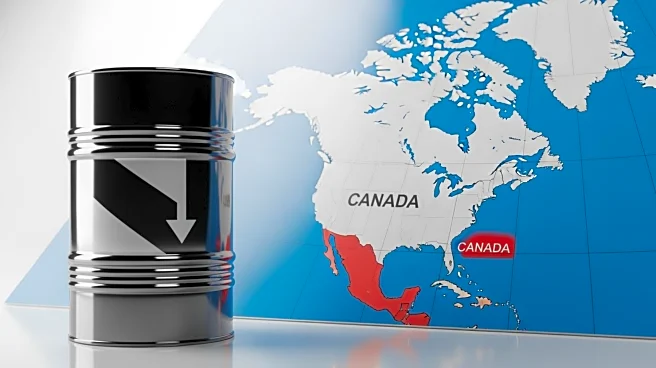What's Happening?
The Canadian dollar has edged lower against the U.S. dollar, trading at 1.4050 per U.S. dollar, as investors assess the prospects of a sectoral trade deal between the U.S. and Canada. The currency touched
a six-month low amid ongoing negotiations in sectors like steel, aluminum, and autos, which have been affected by U.S. tariffs. The United States-Mexico-Canada trade agreement is up for review in 2026, adding to the uncertainty. Oil prices, a major Canadian export, also fell, contributing to the currency's decline.
Why It's Important?
The decline in the Canadian dollar reflects investor uncertainty regarding trade negotiations with the U.S., which could impact key Canadian industries. A favorable trade deal could bolster the Canadian economy, while continued tariffs may hinder growth. The currency's performance is also tied to oil prices, which are influenced by global trade tensions and supply predictions. The situation underscores the interconnectedness of trade policies and economic health.
What's Next?
The Bank of Canada is expected to address economic outlooks, with potential interest rate adjustments on the horizon. Investors are closely watching for developments in trade negotiations, which could influence currency stability and economic forecasts. The upcoming review of the trade agreement in 2026 will be pivotal in shaping future trade relations and economic strategies.
Beyond the Headlines
The situation highlights the broader implications of trade policies on national currencies and economic stability. It also reflects the challenges of navigating international trade agreements amid geopolitical tensions. Long-term solutions may require strategic economic planning and diplomatic efforts to secure favorable trade terms.













